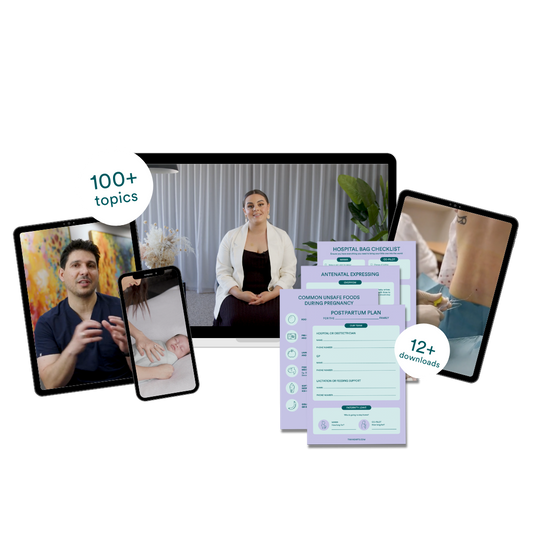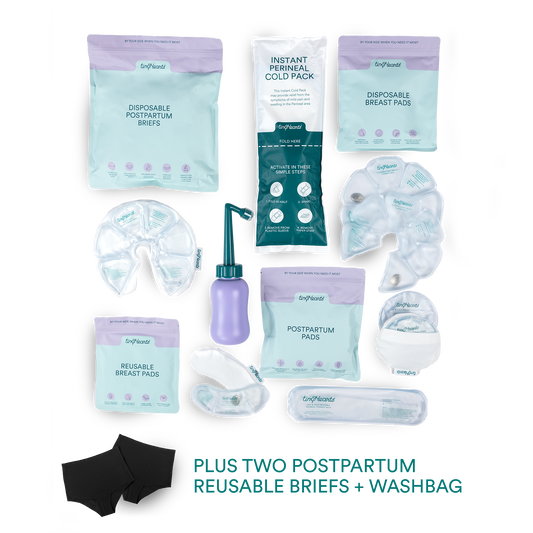While as parents we wish we could prevent illness and injury in our little ones, the truth of the matter is that they will experience hurt like this at some stage in their lives. From bumps and bruises to serious first aid emergencies; being prepared and having a first aid kit on hand is a must-do for any Proactive Parent.
But where do I start? You ask.
While there are hundreds of items you could potentially include in your home first aid kit, we’ve compiled a list of the top five no parent should go without.

1. Paediatric Resuscitation Mask
Did you know that using a resuscitation mask will result in safer and more effective resuscitation?
Among many things, paediatric resuscitation masks provide a one-way valve which separates the patient and the rescuer - offering greater protection when performing CPR. In addition, the paediatric specific design allows for a tighter seal when delivering the breath component of resuscitation to little ones.
Tiny Hearts highly recommends for parents to invest in a paediatric resuscitation mask for their home first aid kit.
2. Plasters and Bandages
The holy grail of any first aid kit. Plasters and bandages are essential for patching up cuts, scrapes and everything in between.
Different wounds, however, require different dressings and products to assist with healing. Therefore, it is great to have a variety of dressings on hand so you can effectively manage wounds at home.
We recommend having a mix of dressings (to control and cover wounds), conforming bandages (to hold dressings in place) and triangle bandages (for support) in conjunction with everyday plasters.
Remember when attending to a child’s wound make sure to wash your hands before and after to prevent any infection and seek medical advice if required.
3. Thermometer
As parents, we know when something’s not right with our bub - but sometimes it can be hard to check your little one’s temperature just by touch.
A thermometer will give you quick and accurate reading and tell you whether or not it’s time to head to your local GP. If your child has a fever and is under three months old, please see your doctor immediately.
It is without a doubt that thermometers should be a staple in any home and there are several different types of available for purchase such as digital, electronic, forehead and pacifier.
We recommend purchasing a digital thermometer - these are best for taking temperatures by the armpit and mouth. This way you will receive a clear and concise reading on the display.

4. Antiseptics and Antibacterial
If it’s got ‘anti’ at the start, we want it!
Having antibacterial hand gel and wipes on hand is essential for hygiene and cleaning wounds before dressing.
Antiseptic creams and gels are also great to have on hand to treat and soothe any little mishaps. In addition to antiseptic products, we keep insect repellent and burn gel in our first aid kit to be prepared for all occasions.
5. Cold Pack
Cold packs are an essential first aid item for parents to have on hand, and they are useful for many first aid incidents. From bumps and bruises to sprains and stings, cold packs will help to reduce inflammation and soothe the pain.
Cold packs can either come in the reusable version which can be kept in your family fridge, or the instant option.
So which should you have for your family? Well, we recommend both! While reusable cold packs are optimal, the instant version is easy to store, great for travel purposes and useful in emergency situations.
It should be noted that you should never apply ice directly to the skin of your little one and do so can cause damage.
“That all sounds great TH, but I don’t have time to shop around for all of this?”
Well, it’s your lucky day! Your pals at Tiny Hearts we’ve created the ultimate Family First Aid Kit that is a must-have for all Proactive Parents. Our kits include 75 life-saving items that you may need to render first aid to your little one.

Sources
- www.familiesmagazine.com.au
- www.rch.org.au
- www.hnehealth.nsw.gov.au








